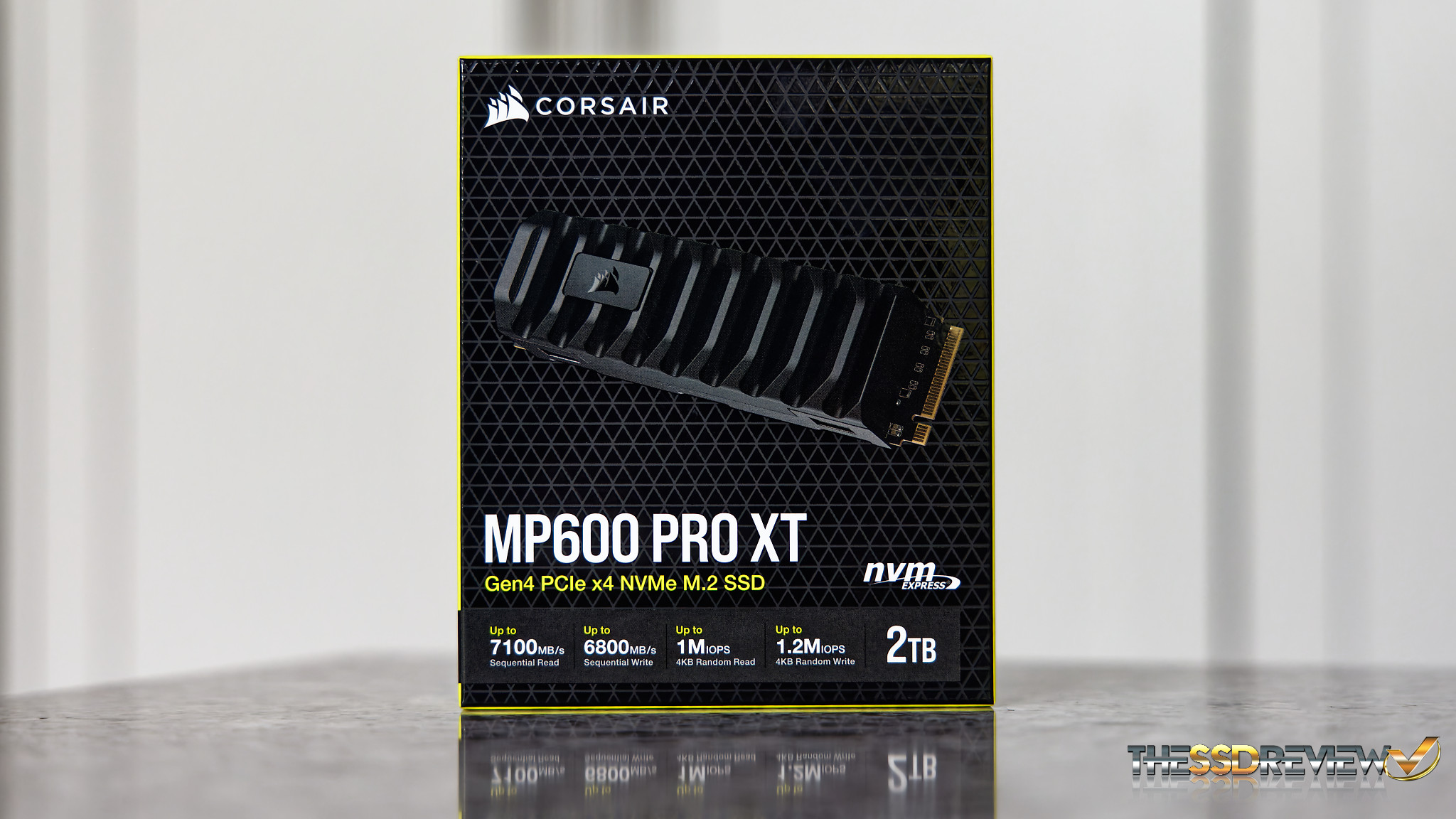So I was in a conversation this week where many were speaking of the success of the Phison E18 controller and I stepped away from the crowd for a bit and had to ask, “Yes but will this last?” Historically, we have watched different SSD companies, and more specifically, third party SSD controller companies step into the limelight with a great product and remain there for some time but, throughout time, others have taken their place at the podium.
Marvell is a great example as is SMI, and I even mentioned that I can remember being at Flash Memory Summit some time back and asking that golden question at the Phison display, the same that I had asked the year prior… “Yes this is nice but when will we see your products finally hit consumer and business sales?” Well, they showed me and the Corsair MP600 Pro XT that we are reviewing today just may be their best example of being at the top and holding their place at the podium just yet.
There just has to be many of you right about now asking yourself, “What the heck do I care about what’s inside my SSD?” We know this because, traditionally, statistics show that most only read the front and last page of consumer tech hardware reports which means that you want to know what it is, what it does, if we recommend it, if it has a good price and where can you get it. My perspective however, is that by not reading the content in its entirety, you just may end up buying an SSD that you really don’t need or, at least in the case of the Corsair MP600 Pro XT, you just may be missing out on one of the best SSDs available in the consumer market today.
This is the 2TB version of the Corsair MP600 XT NVMe SSD. It is a M.2 PCIe 4.0 X4 (4-lane) NVMe SSD that uses the latest NVMe 1.4 protocol. It can be purchased in capacities of 1.2 and 4TB, has AES 256-bit encryption, and comes with, at least what I think is the best looking heatsink in the market right now.
Listed performance specifications speak to 7.1GB/s read and 6.8GB/s write with up to 1 million random read low 4K IOPS and 1.2 million low 4K random write IOPS. Endurance is rated at up to 1400TBW for the 2TB sample we are reviewing and this SSD has a 5-year limited warranty. These two top pictures show the M.2 encased in a two piece heatsink of which the top portion is constructed of thick black aluminum ribbing for maximum heat dissipation.
The M.2 SSD itself has the components situated on a black 2280 form factor (80mm) PCB which is the standard today. The Corsair MP600 Pro XT contains the Phison PS5018-E18 eight-channel Gen4 NVMe SSD controller, eight pieces of Micron’s best 3D 176-layer TLC B47R Fortis NAND flash memory along with 2GB of SK Hynix DDR4 DRAM cache memory.
MSRP pricing for the Corsair MP600 Pro XT is set at $199.99 (1TB), $399,99 (2TB), and it jumps to a whopping $989.99 for the 4TB when available. Checking Amazon at the time of this report, we are seeing that Corsair has it listed at a slightly higher price in the Corsair Amazon Store, also highlighting the Pro XT Hydro version for liquid cooled systems.
CORSAIR SSD TOOLBOX (Direct DL)
Although the GUI appears a bit outdated (more than a bit actually) this software program is free, does what it says and has been recently updated. Clicking on the title brings you to a direct download of the most recent version.
Capable of providing SSD information, changing over-provisioning, providing SMART information, optimization and secure wipe of your SSD, this software helps to keep it in top shape and includes a firmware update selection.
 The SSD Review The Worlds Dedicated SSD Education and Review Resource |
The SSD Review The Worlds Dedicated SSD Education and Review Resource | 


Thanks for the review.
Please answer, why you say “The Corsair MP600 Pro XT Gen4 NVMe SSD is the second best result we have ever received in testing OS data, just behind that of the Plextor M10P.”
when the WD_Black SN850 makes this 15 GB OS-file transfer according to your test in 62 sec only!
Can you explain how the wd black 850 achieves this, what no other companie’s ssd can do?
The “older” 96-layer nand beats even the new 176-layer nand.
The SSD you are referring to was tested with the AMD Test Bench and the drives compared in this result are all tested with the Intel Test Bench, as stated at the top of the chart. As for that result, that review fully explains our surprise and repeated testing with the same times over and over.
No explanations or guesses how the SN850 achieves that 😉
Any number of the MP600 Pro XT is higher; in some cases by a lot.
I think I found the reason for that in another review: The big 281GB slc cache + controller optimized for 4kB IOs in the first run; second run it gets slower by a lot.
Not normal thing to do I guess?
Can you please explain if all/how many the ssd we see nowadays have
1) static dedicated slc-cache
2) pseudo slc-cache (taken portion from the tlc-nand)
3) dynamic pseudi slc-cache (like 2), but dynamicall adapted, changing size if needed.
If there are changes, how I know as a consumer?
Thanks!
Hi there! Thank you so much for the review. this was helpful and information..